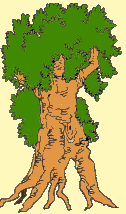Petroselinum Sativum ( Pasley)
Petroselinum Sativum ( Persil)
Petroselinum Sativum ( Parsley)
Petroselinum Sativum (Parsley)
French: parsley, cultivated parsley, fragrant parsley. Wolof: Parsley
Parsley belongs to the Apiaceae (Umbelliferae) family and can be considered both an aromatic herb and a leaf vegetable. There is also a variety cultivated for its tuber, the root parsley. Parsley is native to the south-eastern Mediterranean rim, where it grows wild. Today it is known and cultivated all over the world. It is a biennial plant with rather large roots, the popular leaves of which contain appreciable amounts of vitamins A, C, and E. They are also rich in minerals, iron, and protein. We can distinguish flat parsley or common parsley, sometimes called parsley of Naples, whose leaves are smooth, and curly parsley, obtained by crossing varieties with flat leaves. It is apiol, an essential oil, which gives fresh parsley leaves their typical, spicy flavor, which fades when dried.
Parsley (Petroselinum crispum) is the only species of the genus Petroselinum. It is a herbaceous plant of the Apiaceae (Umbellifera) family, commonly used in cooking for its very divided leaves, and in Central Europe for its tuber. It is also a medicinal plant.
Parsley is a biennial plant 25 to 80 cm high, very aromatic when crumpled, with a characteristic odor.
The stems are ridged and the leaves are glabrous.
The glossy green leaves are doubly divided, especially those at the base, the upper leaves often having only three narrow, elongated lobes.
The flowers, a greenish-yellow to white color in full bloom, are grouped in compound umbels comprising eight to twenty rays. The umbellules have an involucellate with many bracts.
The elongated taproot type is quite developed. It is yellowish, with a strong and aromatic odor.
Flat-leaf parsley can be confused with the small hemlock (Aethusa cynapium), a poisonous plant of the same family. The small hemlock is very similar to parsley by its leaves but is distinguished by reddish traces at the base of the stems and its unpleasant odor
Spontaneous plants in Southwest Asia and North Africa, widely cultivated in all parts of the world. It can be found in a subspontaneous or naturalized state here and there in the five continents.
It is a plant rich in essential oils including apiol (also called parsley camphor, present in the seeds), accompanied by myristicin. It contains a flavonoid glucoside, apiin, or apioside, the aglycon of which is apigenin.
The leaves are rich in vitamins A and C.
Parsley is a vegetable and medicinal plant. (...) Parsley is hot & desiccant, attenuating, aperitif, detergent, diuretic and hepatic. Its main use is in obstruction of the lung, liver, spleen, kidneys, bladder, jaundice, cachexia, calculus, gravel, urine removal & months. (... ) Parsley leaves are resolving & vulnerary: this is why they are applied with great success on cuts, however deep they may be; & on bruises after having crumpled them between the fingers, as also on the breasts to make women lose milk after having given birth; they cause hot tumors to resolve; & especially eye contusions. These recent leaves spread over the water of ponds or fountains, recreate and delight sick fish.
Add a comment























